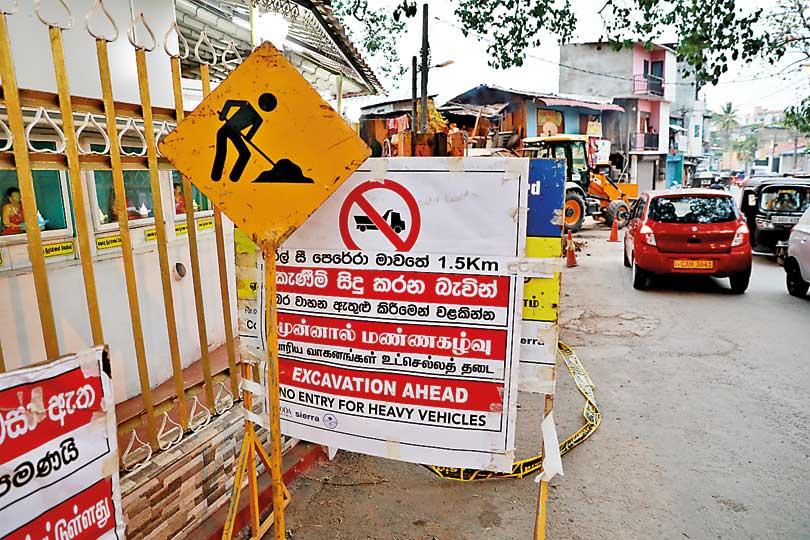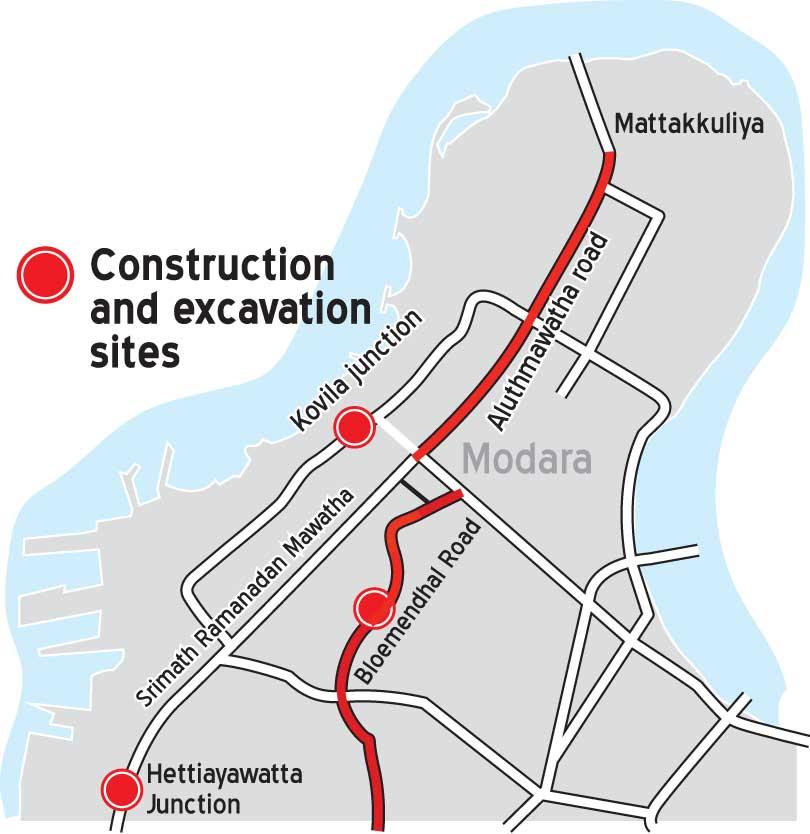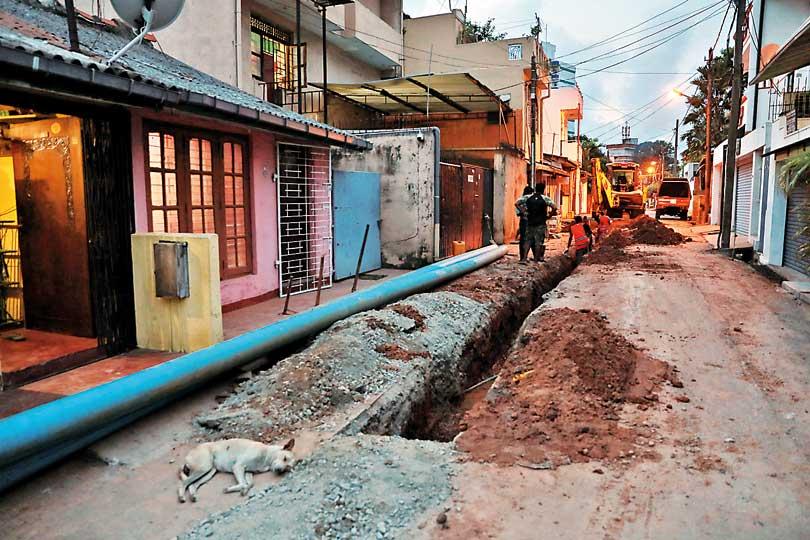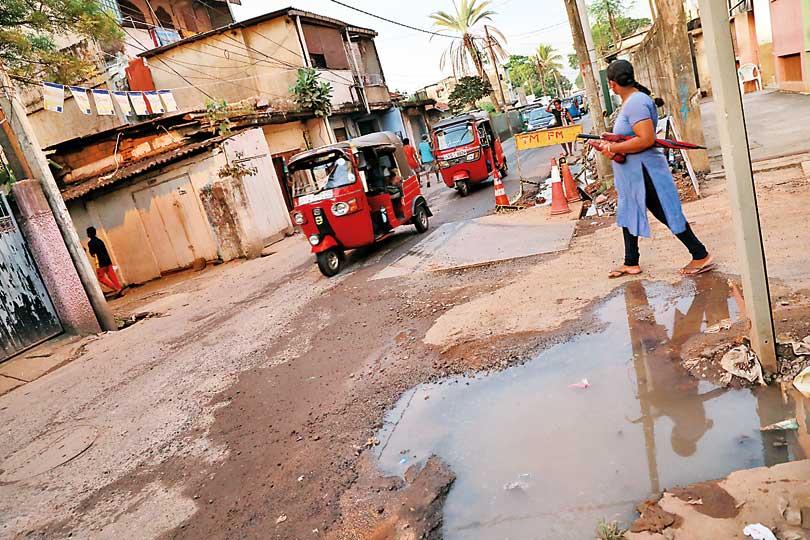16 Oct 2019 - {{hitsCtrl.values.hits}}

 Situated in Colombo’s northern border, Modara is today a neglected land. Infrastructural decay in this once-prestigious harbour city resembles more underdeveloped areas in Sri Lanka. Important trunk roads experience unending construction as major underground oil, sewerage and waste-water pipelines connect to the sea via this area. Further, constant electricity, sewerage, water or oil pipeline maintenance work submerges roads. These excavations overwhelm the area, causing traffic jams and pollution. They also affect pedestrians, roadside businesses and residents, who are desperate for solutions but are ignored by authorities.
Situated in Colombo’s northern border, Modara is today a neglected land. Infrastructural decay in this once-prestigious harbour city resembles more underdeveloped areas in Sri Lanka. Important trunk roads experience unending construction as major underground oil, sewerage and waste-water pipelines connect to the sea via this area. Further, constant electricity, sewerage, water or oil pipeline maintenance work submerges roads. These excavations overwhelm the area, causing traffic jams and pollution. They also affect pedestrians, roadside businesses and residents, who are desperate for solutions but are ignored by authorities.
One major problem is that the Water and Electricity Boards dredge roads already built by the Road Development Authority. Water lines are provided haphazardly, with roadways being dug up for each house. Authorities ignore frequent leakages, which deprive citizens of water for days, and muddy the roads.
Further, the manholes in Modara Police Junction blow up regularly, poisoning the air and inconveniencing passersby. A rusty sewage pipeline recently burst open and leaked out its contents. It was poorly plastered, and is waiting to burst again. On hot days, dust clouds from construction work engulf the roads, affecting shops, bakeries and eateries. This contaminates roadside food, and shopkeepers in Kovil Junction complained of losing customers.

Modara has been under construction for years, but the results don’t show. Some residents hope that once the Port City is completed their problems would cease. But they also worry that once the water lines are completed there would be less water pressure. But a project officer, who did not wish to be named, debunked these fears and said they had planned to supply water for 30 to 40 years. The source told Daily Mirror that 90 percent of the work was done, and it would end in six months. Further, GIS technology would make repairing breakdowns and detecting leakages easier in the future.
A board in Galwala Junction declares that the Rs 40 billion ‘Colombo Water Supply Service Improvement Project’ will be completed in 2022. An ADB report said Colombo was one of the few Asian cities to have piped water in the 1800s. Many pipelines are over 100 years old. The new water project is funded by the government and the Asian Development Bank (ADB). It promises long-term results, and the board says: “Let’s bear the short-term inconveniences to achieve the long-term benefits.” But residents complained that daily short-term inconveniences were becoming unbearable.
Meanwhile, a new flood control project was initiated to build a storm-water drainage tunnel via New Muthuwella. The tunnel will move water from the Aluth Mawatha main drain to be released near the Muthuwella fishing harbour. The underground tunnel is 760 metres long and can carry 15,000 litres per second.

On a typical day, the mornings and evenings are plagued with endless traffic. Hundreds of thousands of people use Srimath Ramanadan Mawatha, the main road from Pettah to Wattala via Mattakkuliya, as short-access to Colombo. This causes major traffic snarls during the morning and evening rush hours. Daily bus commuters undergo severe hardships on routes 145, 178 and 155. Buses designed for 50 passengers transport over 100 passengers. Container trucks, lorries, cement trucks and other construction vehicles take up two-thirds of the road between Dockland Junction and Hettiayawatta Junction. People travelling to Maradana frequent Bloemendhal Road, one of the worst affected roads due to unending construction. The St. James Lane Junction has constant traffic with sporadic mud pools and ruts caused by water leakages. The mud converts to fine dust when dry, affecting people’s breathing and staining passing vehicles.
Three-wheelers and cabs often reject trips to Modara due to rutty roads and traffic. Nadarajah, a resident three-wheeler driver complained of a severe back pain due to constant trips. Bandula, another daily road-user, said they would not be running three-wheelers if they had another source of livelihood.
A new traffic plan mapped for those travelling towards Pettah relieved traffic to some extent. But it also increased traffic in earlier unaffected places. But the condition of some roads has improved recently.

Located close to infamous Bloemendhal garbage site, the municipal building premises is often laden sky-high with garbage bags. A resident Kanthi Perera told Daily Mirror they kept garbage bags at their gates as the police had banned them from being dumped on the roads. Violaters are fined Rs 2000. However the door-to-door garbage collection service is dysfunctional. “On some days garbage is not collected. The collector is an old man or woman who is too old or weak to push the cart. They are poverty-stricken,” Ms Perera said. Each garbage collector covers a large area. Their carts are too small to carry huge loads. So they do several rounds a day. “The collectors are being paid by us for carrying the garbage. Some are addicted to drugs, and won’t touch garbage without money,” Ms Perera added. When garbage is not collected, the bags are opened and scattered by stray animals.
Older residents recalled that Modara used to be an affluent neighbourhood like Cinnamon Gardens. Currently thousands of residents live in mushrooming apartments, flats, and housing complexes. They pay taxes for basic facilities like water, electricity and solid waste management. According to an ADB report, local authorities are responsible for solid waste collection and disposal, and residents pay directly and indirectly for such services through property-assessment taxes, stamp duties and other levies.

Ongoing projects in Modara indicate the value of this neglected area near the Colombo Port. It is a multi-ethnic and multi-religious area, and has famous religious shrines like the Kali Kovil and St. James Church. It also has the Madampitiya cemetery, the second largest in the country, the Rock House army base and the Crow Island beach. The Kelani River joins the sea in Modara, giving the city its name. But Modara residents have been paying a heavy price, despite living in this historic and important location.
Pix by Nisansala Dissanayaka
19 Apr 2024 34 minute ago
19 Apr 2024 39 minute ago
19 Apr 2024 1 hours ago
19 Apr 2024 3 hours ago
19 Apr 2024 6 hours ago